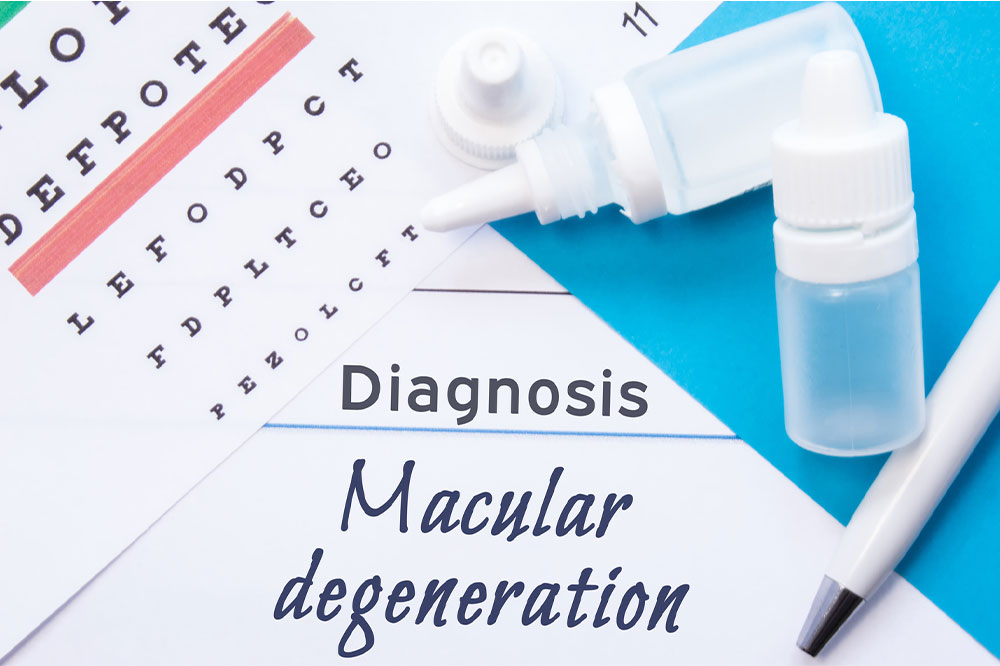
A brief understanding of age-related macular degeneration
The human body tends to change as we age. Our bones shrink, muscles lose strength, skin wrinkles, and the body loses structure and changes shape. Another alteration commonly observed with age is deterioration or loss of vision. Many eye-related troubles can lead to vision loss in adults over 60. Age-related macular degeneration is one of them. In this article, we briefly explore all aspects of this condition.
What is AMD?
Age-related macular degeneration, commonly known as macular degeneration or AMD, is an eye condition that leads to permanent loss of vision. It is a leading cause of loss of vision and is often seen in those over 60. Macular degeneration affects the macula that is responsible for sharp vision. It lies in the center of the retina, which is the light-sensitive tissue at the back of the eye. Note that AMD does not cause complete loss of vision. It instead causes individuals to lose their central vision. This makes it challenging to engage in day-to-day activities, such as reading, driving, recognizing faces, and other close-up tasks. There are two main types of macular degeneration.
- Dry macular degeneration
Dry macular degeneration, also known as atrophic AMD, is a common macular degeneration. There is a build-up of yellow deposits known as drusen in the macula in dry AMD. The more drusen in the macula, the more damage to the individual’s vision. With dry AMD, individuals experience dim vision along with distortions. Dry AMD occurs in three stages – early, intermediate, and late. It progresses very slowly over a long period with no symptoms. This is why, in most cases, Dry AMD is diagnosed in the later stages. - Wet macular degeneration
Wet macular degeneration, also known as advanced neovascular AMD, causes quick vision loss. Dry AMD usually turns into wet AMD. There is an abnormal growth of blood vessels under the macula during wet AMD. These blood vessels can leak blood and other fluids into the retina. This affects the central vision of the individual, and these damages are often permanent. Due to the fluids, individuals may also have a wavy vision and notice blind spots.
Symptoms of AMD
The symptoms of AMD can vary based on the type and stage of the AMD. The body does not typically present any symptoms in the early and intermediate stages of dry AMD. In very rare cases, individuals who have intermediate dry AMD may notice a slight blurriness in their vision or have trouble seeing in poor lighting. In the late stage of dry AMD, individuals may see distortions in their vision, including seeing straight lines as crooked or wavy. There may also be blurry or blind spots in the central vision. As the disease progresses, these blind spots and distortions may get more prominent. These symptoms are also common in wet macular degeneration.
Causes and risk factors of AMD
There are no known causes of macular degeneration. But, studies suggest that certain factors may play a role in its development. These risk factors include the following:
- Age
Studies have shown that AMD is more common in adults over 60. - Genetic predisposition
Individuals with a family history of specific genes linked to AMD are more likely to develop macular degeneration. - Ethnicity
Research suggests that macular degeneration is more common in Caucasians. - Cardiovascular disease
Individuals with heart diseases or diseases that affect their blood vessels are at higher risk of AMD.
Treating macular degeneration
Currently, there are no cures available for macular degeneration. Treatments that are available help deal with the symptoms and slow down the condition’s progression.
Anti-angiogenic medications
Anti-angiogenic medications are injected directly into the eye to stop blood vessels from forming. They also block the leaking of blood and other fluids to prevent wet macular degeneration.
Laser therapy
Laser therapy involves using the high-energy laser to destroy growing abnormal blood vessels in the macula.
Photodynamic laser therapy
Photodynamic laser therapy is a two-step treatment for AMD. It uses light-sensitive medications to damage the abnormal blood vessels in the macula. The first stage involves injecting the dose into the bloodstream. The second stage uses a laser to activate the dose in the blood vessels.
In cases of permanent vision damage, doctors prescribe low vision aids. These are electronic devices with special lenses that enlarge or enhance the images to provide better clarity. Popular low vision aids include reading magnifiers, binoculars, electronic glasses, and special phone applications and eyeglasses.




